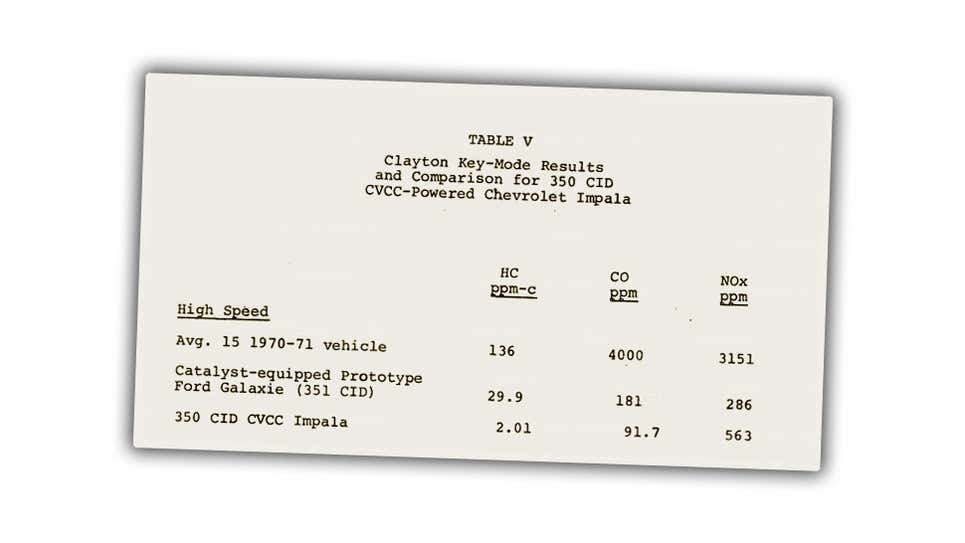Quote:
Originally Posted by racprops

No it does not.
Not any more that dose a Carb, TBI, Port Injection, etc.
Try breathing the tail pip[e of one and see.
Even with the cats etc. it still stinks.
Rich
|
Quote:
|
Honda's smaller engines (and I'm sure others as well) make pretty much zero noticeable fumes. My car came with a "Super Ultra Low Emissions Vehicle (SULEV)" sticker.
|
Going into a bit more detail as to how Honda really cleaned up emissions:
At idle and low RPM, fuel is injected early, before the valves open, and is sprayed directly onto the back of the hot valves, which vaporizes it. Then, the valves open asymmetrically. One valve opens moderately, and the other, only slightly. This creates a vortex as the fuel is pulled into the cylinder, giving a very even distribution of the fuel vapor in the combustion chamber. The spark plug is placed at the side of the cylinder head and is indexed so the side electrode is not in the way of the fuel, which is forced to swirl through the plug.
On many Honda engines, dual spark plugs are used, one on either side of the cylinder, and the timing of the vales opening is also delayed, to give more time for fuel to vaporize while sitting on the valves, and to create an asymmetrical compression and expansion ratio - the piston has already started moving down the cylinder before the valves are opened, which cuts pumping losses.
So as not to compromise high speed power, above a certain RPM, oil pressure pushes a locking pin into and locks the valvetrain rockers to a second set, which rides on more aggressive cam lobes. The camshaft is then advanced relative to the crank, also done via oil pressure. Some of their larger car engines have smooth, (relatively) clean idles while being able to make power past 9,000rpm from the factory.
I'm certain other companies use similar technologies, but I'm less familiar with them, as I've been a Honda owner for a long time.
~
This is really worth reading:
https://jalopnik.com/when-honda-gave...kdo-1576732771
To summarize, back in 1973 Honda was able to build engines that could meet the EPA's emissions targets, without the use of a catalyst, whereas every American manufacturer was unable to.
Quote:
It was such a big deal that Ford and Chrysler had both signed up to license the technology. But not GM. In fact, here's what the CEO of GM, Richard Gerstenberg, said of Honda's technology:
"Well, I have looked at this design, and while it might work on some little toy motorcycle engine…I see no potential for it on one of our GM car engines."
|
Quote:
Eventually, this statement got back to the head of Honda, Soichiro Honda. For those of you unfamiliar, Soichiro was an amazingly gifted engineer and a very determined man, starting Honda in a wooden shack making add-on engines for bicycles and eventually turning it into one of the biggest motorcycle and automobile manufacturers in the world. The hidden message here is you don't ****ing call his engines "little toys."
Clearly interested in "one of our GM car engines," Soichiro bought a 1973 Chevy Impala with a big-ass 5.7L V8 and had it air-freighted to Japan. I think you can see where this is heading. Honda instructed his engineers to design and build a CVCC system for the GM V8, and that's exactly what they did: they replaced the intake manifold, cylinder heads, and carburetor of the engine so that it used Honda's CVCC technology. He then had it flown back to Ann Arbor, where it was tested by the EPA.
And you know what? It worked. The system Gerstenberg had derided as only suitable for "some little toy" engine allowed the big, thirsty V8 to pass the new EPA emissions requirements without a catalytic converter. Horsepower remained at 160 HP, and some tests even showed a slight fuel economy improvement.
...the CVCC V8 was still massively cleaner than most other engines of the era and easily passed the EPA's requirements. Here's the high-speed results, for example:

So, let's just recap: CEO of GM talks some **** about Honda's technology. The man who founded Honda hears it, and instead of releasing some pissy statement to the press, gets a car from GM themselves and makes it better than they could do themselves. And he lets the EPA prove it.
|
^ Note that it was cleaner in both HC and CO without a catalyst, than the GM-built engine
with a catalyst. It had a 93% reduction in unburnt hydrocarbons.